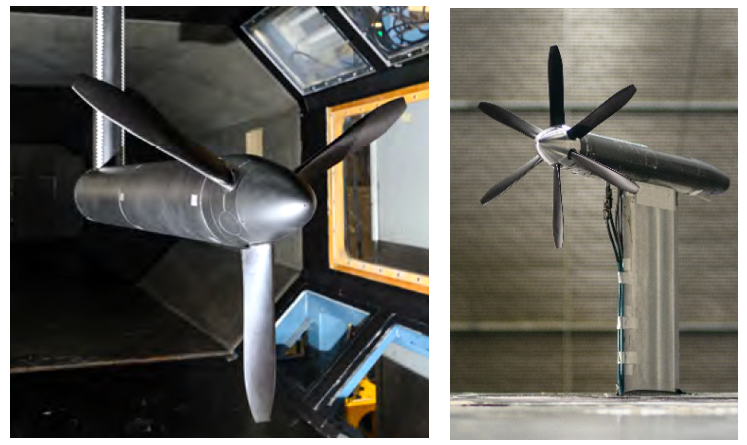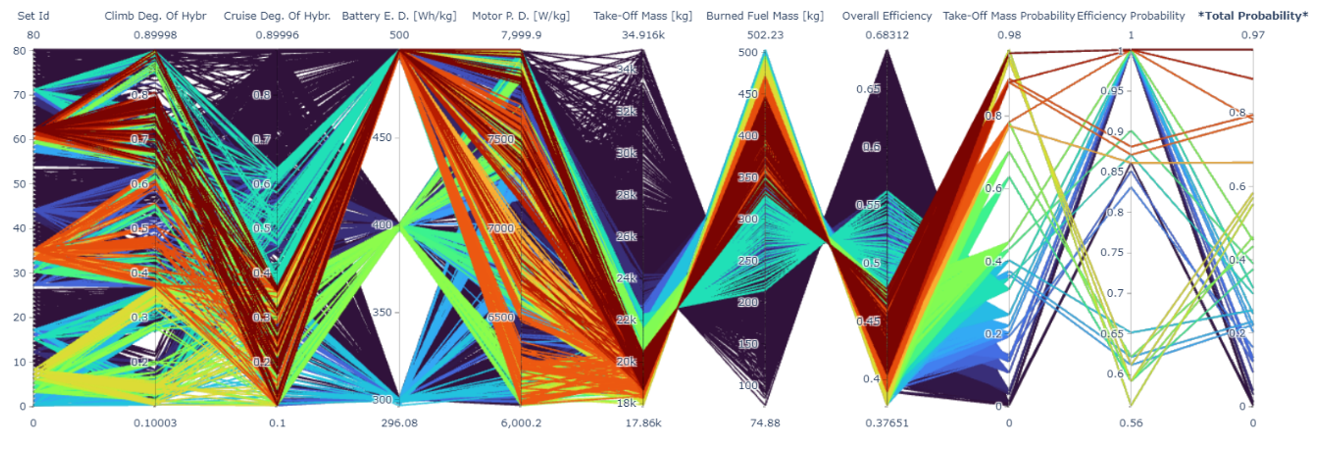Highlights Summary
The WP was impacted by the full and initial brunt of COVID. But we were able to sail through and published the big main deliverable, the reference pack with Top Level Aircraft Requirements (TLAR) for a up to 50 PAX aircraft, Figures of Merit, reference Missions and considerations in Energy Management Strategies and a reference, Year 2040 conventional aircraft configuration study. We also started the work on the aircraft design methodology, which will be tailored for this type of new propulsion. This work was then presented at two EASN conferences and resulted in a peer reviewed paper which already started to be cited.
Significant Achievements in 2020-2021
The reference pack that was made public through Deliverable 2.1 and resulted in a peer reviewed paper is the most significant result that has emanated up to date from WP2. It groups the TLARs, Figures of Merit, reference Missions, Energy Management Strategies and the Y2040 conventional aircraft. These results are key to anchor the project developments but also provide a bridge for collaboration with other researchers outside FutPrint50. We also started a MBSE based approach which we hope will help us to improve our integration and provide another set of reference artifacts to the community.
The main contribution of this work package to the current state of the art, is making available a set of common references for the community, allowing the same base for benchmarking in this class of aircraft. As such, different projects can explore other ideas and concepts while all can benchmark to the same reference, improving collaboration across the community.
The products of WP2 are foundational to the success of FutPrint50: they set our direction and define a framework for development. Also, the Y2040 conventional reference highlighted a couple of gaps that need to be addressed like getting good estimations on NOx to assess the configurations against the TLARs.
What is next
Now we focus on delivering the aircraft design methodology which advances the state-of-the-art regarding set-based design with uncertainty and we are exploring how to connect this within a MBSE framework. As such, we will invest in developing the MBSE models and making available the trade-off tools to the concept design package so they can start experimenting and evolving their design choices.

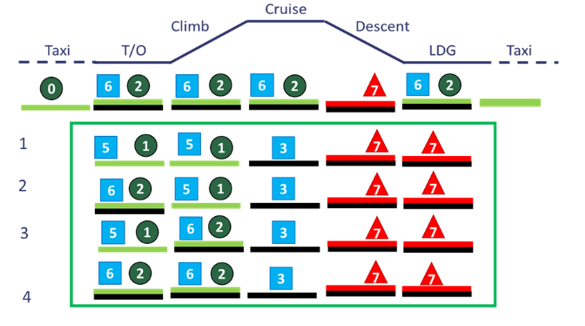
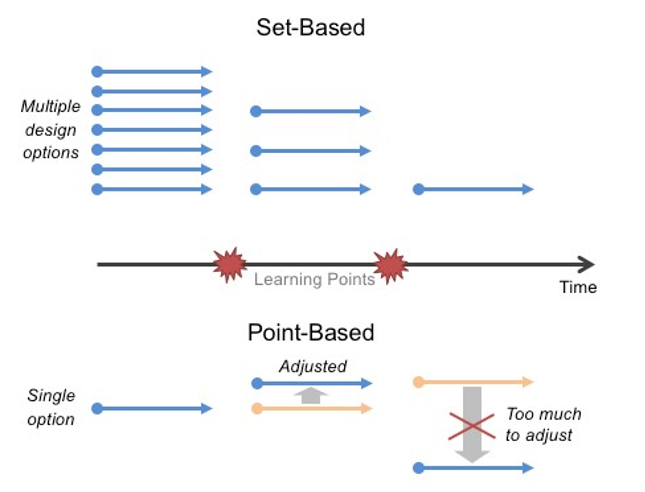
Highlights Summary
Strategy for modelling and integration of the sub-systems to the aircraft is in place based on a level and layered approach (low to high fidelity). Electrical architectures for three selected propulsion acritude were explored and simulations were conducted. Several Thermal Management Systems (TMS) based on absorption refrigerator architecture, fuel-oil heat exchanger architecture, cryocooling, etc were introduced and are under assessment. Energy harvesting from propeller and energy storage in the form of batteries and fuel cells are modelled and sized.
Significant Achievements in 2020-2021
The aim of this work package was to maintain the consortium aware of the latest developments of all the technologies that is investigated in FUTPRINT50. A literature review performed to investigate the state-of-the-art in the fields of: Energy sources and storage, Energy-harvesting rotors, Thermal management technologies to reduce drag and weight, and Gas turbine.
The state-of-the-art analysis (WP3.1) has shown that both battery and fuel-cell technologies were interested in the electric-hybrid aircraft, and battery sizing has been caried out, Battery pack sizing tool diagram is shown below.

Energy harvesting: Aerodynamic and aeroacoustic characteristics of the isolated propeller configuration have been investigated using multi-fidelity approach.
Thermal management: The objective of the WP 3.4 is to research thermal management technologies with the aim to reduce aircraft impacts (weight, drag, power consumption.
Workflow being studied for the TMS:
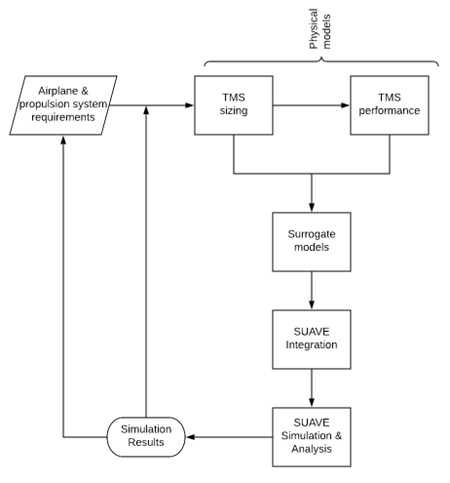
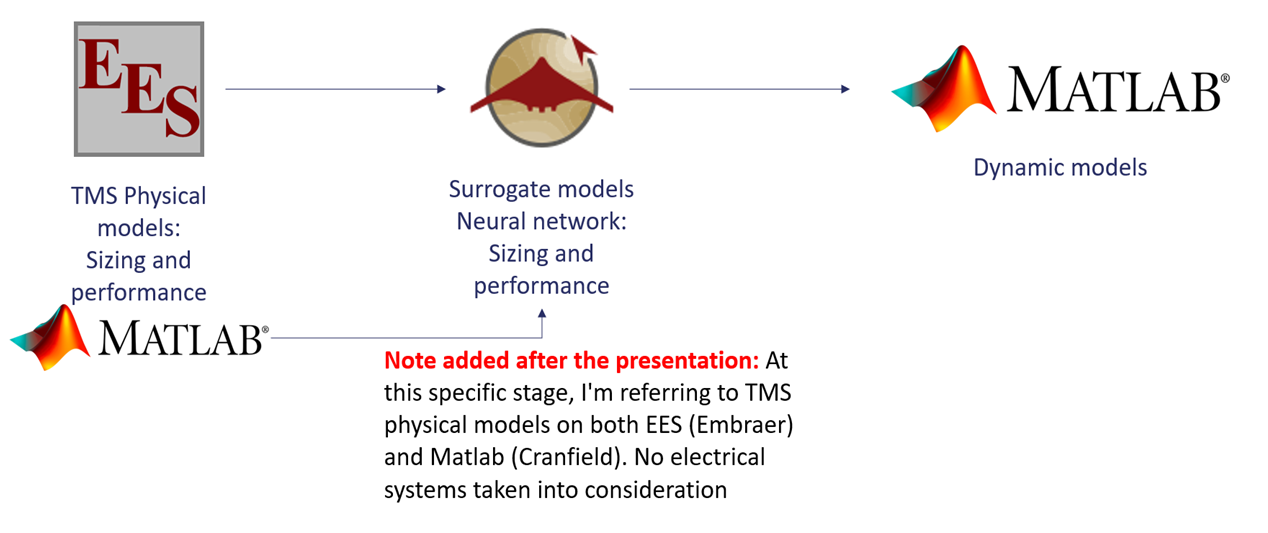
Sub-system models for integrated tool:
A tool is under development by Cranfield University for the design and simulation.
Selection of different electric architecture based on the proposed propulsion architecture is simplified in other studies, however in the FUTPRINT50 project we plan to investigate how different trade-offs are considered when electrical architecture is varied. Methods to define the modelling approach for different architecture will contribute to the learning and design process of components and the system, will allow different stakholders to understand the interactions between different components and systems.
Our excellent results in terms of developing a multilevel approach for design and simulation as well as creating an MBSE tool will contribute to guiding the decision making for modelling, simulation, and designing of the HEP.
What is next
Design exploration at system/architecture level - low fidelity models that consider only certain parameters (these parameters need to be defined between partners). Once we do the design space exploration, we can then select the most promising solutions and have a more detailed simulation model.
Highlights Summary
An initial sizing for seven different architectures was performed to create a first estimate of power requirements and mission performance. The results were used to prioritize three architectures that are further investigated in a preliminary aircraft design loop. Furthermore, these values are used as basis for the subsystems design. Coupled with the initial sizing, an extensive safety assessment was performed.
Significant Achievements in 2020-2021
The performed initial sizing on conceptual level enables us to quickly assess different architectures and to retrain the instinct of the aircraft designers for the novel hybrid-electric aircraft. Furthermore, these values are the input for the first design loop. The ensuing results led to the prioritization of three powertrain architectures which can now be investigated on a deeper level in the subsystems design. In addition, first steps are made in adding the functionality to analyze hybrid-electric aircraft in the desired aircraft design environment. This will allow to further increase the detail of the design.
Currently there are no open source tools available that allow for a rapid preliminary aircraft design of hybrid-electric regional aircraft. Furthermore, no integrated evaluation of the design is available to allow for trade-offs based on different aspects like environment and economy among others.
For all consortium partners, initial values are made available, that can be used for the sizing of the subsystem models investigated in work package 3. Furthermore, this work package will have a look on the overall aircraft, including requirements and constraints for the different subsystems. Apart from performance requirements this also includes weight and volume constraints.
What is next
The subsystem models created in work package 3 will be integrated in the aircraft design environment. Furthermore, this environment is equipped with the functionality to compute the three prioritized architectures. After assessing the different ideas, a promising baseline design is selected and further optimized. Afterwards, the impact of the different subsystems on the aircraft design is estimated.
Highlights Summary
The work in this WP was planned to start in the second half of the project. So far, a detailed planning for energy harvesting experiments has been identified to study and understand aerodynamic and acoustic performance at non-standard propeller conditions. An initial implementation of a multidimensional data visualization software environment has been demonstrated to support WP2 design methodology. This software tool is the first step towards an open-source tool for hybrid-electric aircraft trade-off analysis.
Significant Achievements in 2020-2021
Integration and alignment of the different technical WPs was crucial and non-trivial in our COVID world. With that we got a high level of coordination with the first results of multidisciplinary trade-off analyses for hybrid-electric propulsion systems. This implies integration of the design methodology (WP2) with models of the propulsion architecture (WP3) and the consideration of reference aircraft requirements, mission, and figures of merit (WP2 and WP4). This sets the path for the first iterations of the technology and regulations roadmap.
Other significant result was the planning for the energy harvesting experiments, which is critically important to be executed in 2022, which will feed into our models.
The outcome of WP5 will be a roadmap for key technological developments. This will identify and define which areas in the design space of different components and systems have the highest probability to influence and benefit the next generation regional hybrid electric aircraft. Furthermore, energy harvesting technology validation will offer a solution to materialize such solutions and develop new aircraft architectures.
Using interactive multidimensional data visualization methods on datasets produced from hybrid-electric propulsion systems trade-off studies, we identified suitable energy management strategies that minimize fuel consumption and NOx emissions.
What is next
Continue working closely with WP2 and develop a first prototype of the open-source tool. In addition, assist to the integration of all systems and technologies studied in WP3 and facilitate trade-off analysis at the aircraft level in WP4. Resulting in input to the roadmaps. In addition, start capturing the first data from energy harvesting experiments.
